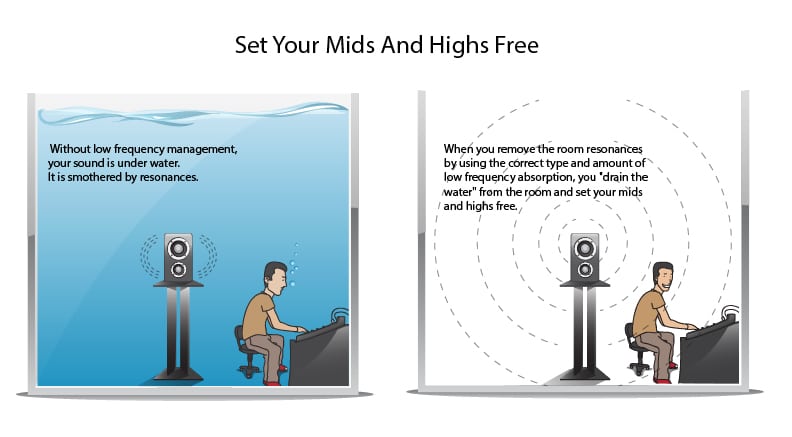Last week I was asked “What is an A-weighted sound level?”. We have standards in units of measurement for sound pressure: we have the A-Scale and the C-Scale, it’s an IEC standard. Let’s think of the A-Scale as pink noise, we did a video on pink noise (which you can see further down this blog post). Pink noise has a curve that’s more closer to human hearing, white noise is more analytical and empirical and we use that to test our equipment. Pink noise we put into the room because it resembles the way we hear, it has that kind of curve to it like our foam and so you can think of the A-Scale as pink noise and the C-Scale as white noise, it’s more analytical.
We use the C-Scale for testing our testing equipment and you use the A-Scale for all the measurements that we do. Room mode hunting, any of those always use the A-Scale. Always use the instrument that the engineer designed to mimic human hearing, always use that scale. That’s usually how scales are divided so always use the one that most closely resembles human hearing. Pink noise, A-Weighted scale, stuff like that, so it’s just a unit of measure that’s standardized throughout the world for pressure. Two ways of measuring it you get basically the same number it’s just that you get there a little differently.
Ali: Cool, alright actually reminds me of when I was in holiday this summer and I was sleeping on a rock by a river and I told you about how peaceful that was because it was by the rapids. You said “Well you were listening to white noise”
Dennis: Yes and here’s an interesting thing about that. Do you know when you play music there’s certain songs that you play that there’s a guitar brake, there’s a vocal, there’s a harmony that just grabs a hold of you and won’t let go? The minute that harmony begins, that brake begins, that note is struck, you are drawn into that whatever that is, you immediately go towards it and sometimes you don’t know why. I don’t know why I like certain things, I don’t know why I like certain guitar brakes or certain drum solos or this or that.
So we’re going to do a little testing next year about that and it’s got to do with resonances and it’s got to do with the resonant frequency I believe of the human body and we’re going to do some testing on that. I have some interesting ideas. We’re going to take peoples favorite music and compare it to their resonant frequency. This will be a fun experiment, see if we can find some correlations.
It’s all about pressure
It’s all about pressure, everything, air, sound, rooms, pressure and reflection, waves and rays. Acoustics is not difficult if you break it down into two areas: pressure and reflections, waves and rays. Everything else will fall into those two categories, that’s an easy way for you to think about room acoustics and low frequency energy.
Think of your room as a glass of water. Your room is full of water, any water that spills off the edge is distortion and the goal is to drop sponges into your room, lower the water level so it gets below your ears and then you can hear everything. So that’s a good way to think about pressure because that’s what pressure does, it just fills the room and it’s like being underwater. Some rooms sound like you’re underwater, you know you get them to do this you know that honk, that’s a room resonance barking at you, it doesn’t like what you’re doing. So it’ll tell you.
In Summary
I hope this discussion helped. Feel free to contact me directly at: 520 – 392 – 9486 MST or info@acousticfields.com. If you would like to learn more about room acoustics please sign up for my free videos and ebook by joining the mailing list here. And if you would like your room acoustic issues analysed for free by me then please fill in the form here and I will be happy to take a look for you.
Thanks and speak soon
Dennis








